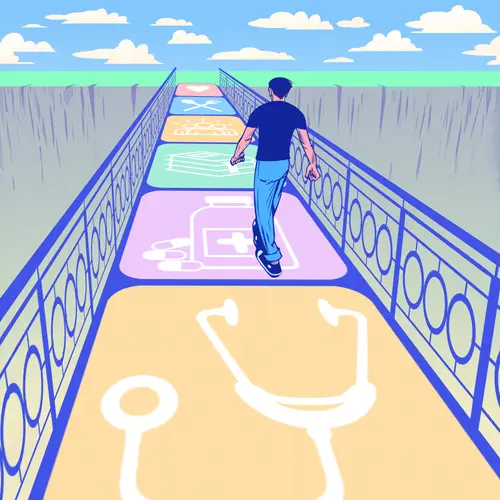If you've been diagnosed with an abnormally low T, testosterone replacement therapy (TRT) offers a lot of benefits. But there are risks, too.
Here's what you need to know before you start TRT.
Can testosterone replacement therapy make me feel more energetic?
If you have an abnormally low T, boosting your testosterone levels with TRT can help bring your energy levels back to normal. It can also restore your sex drive.
You may notice a drop in body fat and a buildup of muscle mass after TRT.
Are there risks to testosterone replacement therapy?
Yes. TRT has side effects, which may include:
- Acne and oily skin
- Lower sperm count, which can cause infertility
- Increased risk of blood clots
- Shrinkage of the testicles
- Larger breasts
- Increased risk of heart attack and stroke
Should I avoid testosterone replacement therapy if I have certain conditions?
Guidelines from the Endocrine Society say you should not have TRT if you have prostate cancer or breast cancer.
But some studies suggest that men who have been successfully treated for prostate cancer may be candidates for TRT as long as they are closely watched for signs of disease. Before starting TRT, your doctor should assess your risk for prostate cancer.
You might be told by a doctor not to get TRT if you have these conditions, which may be made worse by TRT:
- Obstructive sleep apnea
- Severe lower urinary tract symptoms, such as urinary frequency and urgency, associated with an enlarged prostate, or BPH (benign prostatic hyperplasia)
- Severe congestive heart failure
- Above-normal red blood cell counts
TRT is also not advised to be used for treating those with low testosterone caused by aging.
Can testosterone replacement therapy treat ED?
If you have low testosterone, TRT may help restore your ability to have healthy erections and can boost your sex drive.
But ED has many other possible causes. Low testosterone may not be the whole story behind your ED. Talk to your doctor to determine what's at the root of your erection problems.
How do I take testosterone replacement therapy?
TRT comes in several different forms. Each has pros and cons.
Patches. These are easy to apply. But patches can cause skin rashes and may have to be applied more than once a day.
Gels. You rub gels into the skin daily. They are convenient to use. But you have to be careful that no one comes into contact with the treated area for several hours after you've applied it. Otherwise they could get testosterone in their system. A nasal gel is now available that eliminates the risk of exposure to others.
Buccal patch. You put this on your upper gum twice a day. These patches are convenient but can cause irritation or gum disease.
Injections. Injections are given anywhere from 2 to 10 weeks apart. They are inexpensive compared to other treatments. But injections may not provide steady benefits. Your testosterone levels will go back down between doses.
Subcutaneous pellets. Your doctor inserts these under your skin every 3 to 6 months. They are very convenient once they're put in, but they require minor surgery for each dose.
How will I be monitored while on testosterone replacement therapy?
Your doctor will measure your testosterone levels at the 3- and 6-month marks after treatment begins. After that you'll be tested once a year. If your levels are OK you'll stay on your current dose.
If your testosterone levels are too low, your dose may be adjusted. At the same time, your doctor will check your red blood cell levels.
Within 1 to 2 years of TRT, your doctor will measure your bone density if you had osteoporosis when treatment began. Your doctor will evaluate your prostate cancer risk at the start of treatment and may do more tests at the 3- and 6-month marks, and then annually.
Patients taking TRT should call 911 immediately if they have symptoms which include:
- Chest pain
- Shortness of breath or trouble breathing
- Weakness in one side of the body
- Slurred speech
How long do I have to take testosterone replacement therapy?
Indefinitely. TRT does not cure low testosterone, so your symptoms may return if you stop taking it.

